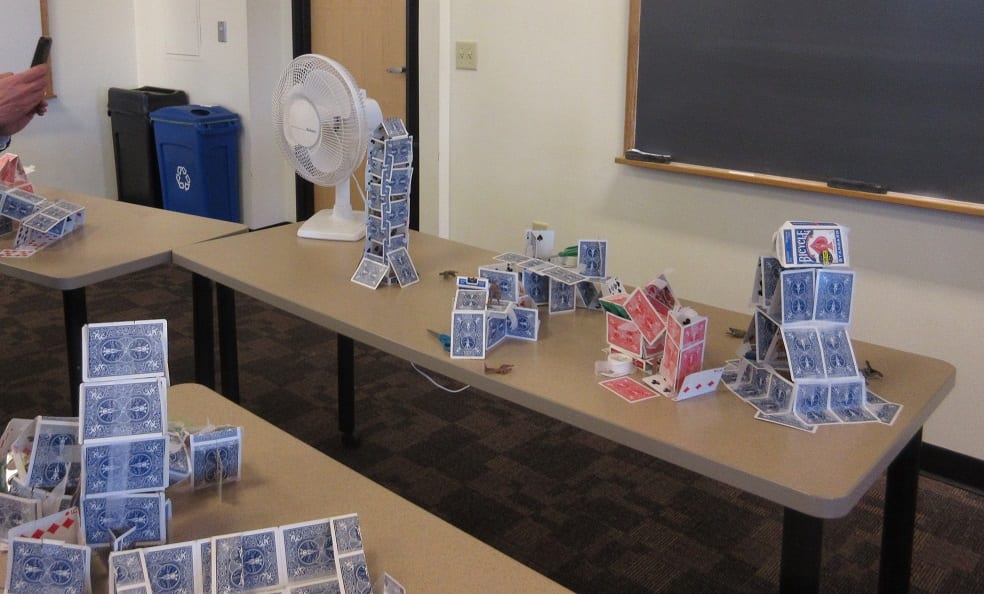Tag: engineering
A continuum of active learning
At the recent American Society for Engineering Education annual conference, a new engineering educator from the University of Pittsburgh referred to this diagram illustrating an active learning continuum. It comes from the Center for Research on Learning and Teaching at the University of Michigan. Using this diagram, he identified the simplest techniques– minute papers, think-pair-share, and […]
Small group activities on the first day of class in introductory materials science

My main pedagogical objective on the first day of class is for students to see, right away, that they will be talking as much as me during the course. In particular, since team-based learning is the dominant pedagogy in the course, I want them to experience that on the first day. In addition, I want to get […]
Puzzles and Myth Busters instead of Powerpoint on the first day of Suzanne LePage’s Transportation Engineering course

To get students actively learning on the first day of my Traffic Engineering Course (CE 3050), I will not use my PowerPoint presentation that lists the various transportation modes, systems, and organizations involved in transportation engineering. Instead, I will break them into groups of four and ask them to complete a crossword puzzle composed of […]
A Lesson about Asking Questions from Zoe Reidinger in Biomedical Engineering

In Biomedical Engineering Design (BME 3300) our students work in small teams to solve a real world problem in a medical/healthcare field over the course of the term. The project for this term is to design, build, and test a portable incubator that is capable of culturing bacterial samples, without access to electricity, in the […]
Use of Think-Pair-Share and Problem Solving in Biomechanics

Professor Kris Billiar, Department Head in Biomedical Engineering, gives some specific examples of activities he uses in class and how he’s improved their effectiveness over the years.
Active Learning Examples from Steve Kmiotek in Chemical Engineering

In an introductory chemical engineering class, I wanted to convey a visual representation of the conservation of mass in different unit operations under different conditions, including steady state, non-steady-state, separation systems, recycle streams, and concepts of concentration. To do this, I had several student volunteers serve as unit operations, processing some red and some yellow […]
Stepping Up the Participation Level in In-Class Activities

I have used a variety of think-pair-share and similar activities in my introductory materials course (ES 2001), with a typical enrollment of 120 in recent years. My main goal is to have each student practice applying principles during class and leverage the power of peer instruction. In addition, I can see how well they’re understanding […]
John Sullivan Notices Increase in Attendance and Class Spirit After Using Think-Pair-Share

In A-term 2015 I used the “think-pair-share” social learning strategy for my ES3001 Thermodynamics class with an enrollment circa 60. Traditionally, I’d ask the class if they had any questions from last lecture. If I’d get one hand raised, it would be a surprise. This A-term, I displayed on the screen a book back-of-chapter question. […]
